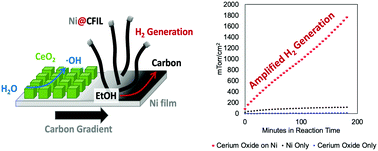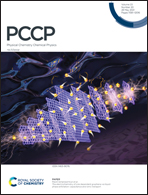Deactivation-free ethanol steam reforming at nickel-tipped carbon filaments†
Abstract
Ni based catalysts have been widely studied for H2 production due to the ability of Ni to break C–C and C–H bonds. In this work, we study inverse catalysts prepared by well-controlled sub-monolayer deposition of CeO2 nanocubes onto Ni thin films for ethanol steam reforming (ESR). Results show that controlling the coverage of CeO2 nanocubes on Ni enhances H2 production by more than an order of magnitude compared to pure Ni. Contrary to the idea that C deposits must be continuously oxidized for sustained H2 production, the surface of the most active catalysts show significant C deposition, yet no deactivation is observed. HAADF-STEM analysis reveals the formation of carbon filaments (CFILs), which propel Ni particles upward at the filament tips via a catalytic tip growth mechanism, resulting in a Ni@CFIL active phase for ESR. Near-ambient pressure XPS indicates that the Ni@CFIL active phase forms as a result of C gradients at the interface between regions of pure Ni metal and domains of closely packed CeO2 nanocubes. These results show that the mesoscale morphology of deposited CeO2 nanocubes is responsible for templating the formation of a Ni@CFIL catalyst, which resists deactivation leading to highly active and stable H2 production from ethanol.



 Please wait while we load your content...
Please wait while we load your content...